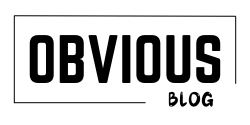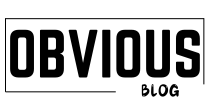It’s no secret that running a small business in today’s fast-paced digital environment is full of problems. But it also creates chances, especially when small firms understand how to use digital marketing for small businesses well.
This is an example: Faiza had a hard time getting people to come to her gift shop in a small, sleepy town. She stopped relying entirely on walk-in customers and started showing off her wares on Instagram, making a modest website, and running ads over the holidays. In just four months, her monthly income doubled. That’s the true, useful power of effective digital marketing.
This post will show you how to do digital marketing for small businesses in the best way, with real-life examples, easy-to-follow processes, and clear explanations.
What is marketing online?
Digital marketing for small businesses, using online tools like search engines, social media, email, and your website to promote your business, is called digital marketing.
Some common digital channels are:
- Search and Maps on Google
- Facebook, Instagram, and LinkedIn
- Newsletters by email
- Videos on YouTube
- Written material and blogs
- Ads that you pay for online
It’s not simply about being everywhere for digital marketing for small businesses. It’s about getting seen by the right people at the right moment.
Why Digital Marketing Works So Well for Small Businesses
Let’s look at it in terms of tangible benefits that Digital marketing for small businesses owners care about.
1. Growth that doesn’t cost a lot
Digital marketing for small businesses is a lot less than TV or newspaper commercials, and it also gives you a better return on your investment.
2. Reaching and targeting customers
You can target people based on their age, region, interests, gender, or even what they recently searched for. No regular billboard can achieve that.
3. Helps you make long-term connections
It’s not simply the first sale that matters. Customers keep coming back because of email newsletters, useful material, and social media posts.

4. Can be measured and changed
You can keep track of every click, view, and purchase. You will always know what is working and what isn’t.
A Step-by-Step Guide to Making Digital Marketing Work Best for Small Businesses
Step 1: Know Who You’re Talking To
Know exactly who your audience is before you invest any money.
Think about:
- What age are they?
- What issues are they working on?
- What social networking sites do they use?
For example, if you make and sell candles by hand, your ideal customers might be ladies between the ages of 25 and 45 who enjoy home decor and shop online.
Step 2: Make a website that looks professional
Your website is like your digital store. Your site works for you all the time, even while you’re closed.
What you need:
- Design that works on mobile devices
- Pages About Us and Contact
- Lists of services or products
- Form for booking or ordering
- Reviews or testimonials
Getting started is easy with platforms like WordPress, Shopify, or Wix.
Step 3: Make a profile for your business on Google
Making and improving your Google Business Profile will help your business show up in local searches.
Advice:
- Make sure to include clear business hours.
- Put pictures of your store or work online.
- Ask satisfied consumers to write reviews
- Answer all reviews, whether they are nice or bad.
This helps your local SEO and builds trust.
Step 4: Learn the Basics of SEO
Search engine optimisation (SEO) helps your business show up higher in Google results.
A Beginner’s SEO Checklist:
- Put words like “bakery in Karachi” on your website
- Write a blog that answers certain questions
- Add tags for the city and surroundings.
- Make your website faster
- Use headers and alt text for images correctly
Use Ubersuggest or the Yoast SEO plugin to help you optimize your site.
Step 5: Use the right social media sites to be active
Social networking isn’t just for entertainment; it’s also for making money.
Pick platforms based on who you want to reach:
- Best for Instagram Brands and goods that are visual
- Facebook marketing to locals and communities
- LinkedIn B2B services
- TikTok creative and viral exposure
Ideas for posts:
- Pictures of before and after
- Short videos that show you how to do anything
- Looks behind the scenes
Customer shout-outs or stories
Step 6: Begin Email Marketing
Email marketing is one of the most potent yet often ignored tactics for digital marketing for small businesses.
How to make a list:
- Give a discount on the first order
- Make a handbook that people can download for free
- Add forms for people to sign up on your blog and website.
- Get people who come into your store to leave their email address.
What to send:
- Sales and deals
- Tips or new blog posts
- Thank you emails that are made just for you
Use platforms like Sender or Mailchimp to automate and keep track of your email campaigns.
Step 7: Make useful content
Content marketing is what drives your brand authority, SEO, and social media.
Types of content:
- Blog entries, like “5 Ways to Use Our Herbal Tea”
- How to use the product
- Talking to customers
- YouTube Shorts or Instagram Reels
Zainab, who sells skin care products, started publishing skin care recommendations on her blog every week and linking to them on Instagram. Google sent 70% of her website traffic within four months.
Step 8: Use paid ads wisely
If organic reach is slow, you can use ads with a minimal budget to encourage more people to see your posts.
Platforms:
- Google Ads for search terms
- Ads on Facebook and Instagram for certain groups of people
- YouTube ads to get people to know about your brand
Start with $5 to $10 a day. Find out which advertising work best by doing A/B testing.
Step 9: Set up analytics to keep track of everything
It’s like shooting in the dark if you don’t measure your marketing.
Put in tools like:
- Google’s Analytics
- Meta Pixel
- Console for Google Search
Follow:
- What pages do people visit the most?
- Where are your visitors coming from?
- How many people leave your site?
- What keywords are doing well?
A Real-Life Example of How a Small Cafe Went Digital
Ahmed had a tiny coffee business in Lahore. He had devoted clients, but not enough people came in on weekdays.
This is what he did:
- Claimed his listing on Google Business
- Started putting up reels of latte art
- Gave a 10% discount for checking in on Instagram
- Started sending out a weekend email newsletter
- Wrote a blog post about coffee tips once a week
The end result? With a marketing expenditure of less than Rs. 15,000, there was a 300% rise in walk-ins over three months.
How to Fix Common digital marketing for small businesses Make
Even smart business owners might get caught up in traps. Stay away from these:
- Posting on social media at odd times
- Not paying attention to mobile design
- The website doesn’t have a call to action
- Writing blog posts without keywords
- Not answering reviews online
How to make it better:
- Make a calendar for your content
- Check your website on phones
- Put in buttons that say “Order Now” or “Book Appointment.”
- Use keyword tools on all of your blogs.
- Set some time each week to reply to reviews.
Advanced Tips for Digital Marketing for Small Businesses Owners
Once you know the basics, try:
1. Ads for remarketing
Show advertising to people who came to your site but didn’t buy anything. A lot of the time, they simply need a little push.
2. Working with Influencers
Get micro-influencers (with less than 50,000 followers) to talk about your products.

3. Marketing through affiliates
Give loyal customers or bloggers a cut of the sales they make when they recommend others.
4. Ebooks or online courses
If you know a lot about something, put it together and sell it. It gives you power and makes money without you having to do anything.
FAQs
How can a small business get started with digital marketing?
Start by building a website, setting up Google Business, using social media, and creating content that helps your target audience solve problems.
Is digital marketing cost-effective for small businesses?
Yes, it offers high ROI with low cost through targeted ads, free content strategies, and tools that allow precise audience targeting and tracking.
How long does it take to see results from digital marketing?
With consistent effort, most small businesses start seeing meaningful results from SEO, content, and social strategies within 3 to 6 months.
Which digital platforms are best for small businesses?
It depends on your audience, but generally Google, Facebook, Instagram, and email marketing tools are highly effective for most small businesses.
Final Thoughts: Why This Plan Works
Digital marketing for small businesses works since that’s where your customers are.
They are reading, watching, searching, and scrolling online. If your brand isn’t showing up, someone else’s is.
So start small, keep going, and keep track of everything. You don’t need a big crew; you simply need the appropriate approach.
If you’re still not sure if digital marketing is worth it for digital marketing for small businesses, the answer is definitely yes.
Start with the fundamentals, like making a good website and being active on one or two social media sites. Then, add more material, emails, and advertising. Every little thing you do adds up over time.
You don’t have to be flawless; you just have to start.





















